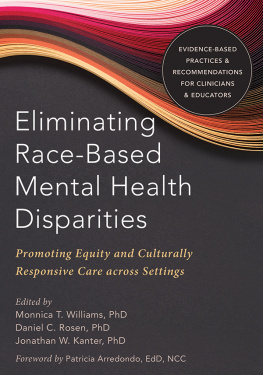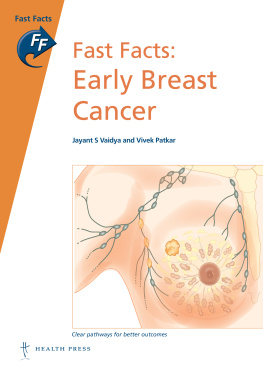Basic Benefits and Clinical Guidelines
Basic Benefits and Clinical Guidelines
Edited BY
David C. Hadorn
With a Foreword by
Richard D. Lamm
First published 1992 by Westview Press
Published 2018 by Routledge
52 Vanderbilt Avenue, New York, NY 10017
2 Park Square, Milton Park, Abingdon, Oxon OX14 4RN
Routledge is an imprint of the Taylor & Francis Group, an informa business
Copyright 1992 by Taylor & Francis
All rights reserved. No part of this book may be reprinted or reproduced or utilised in any form or by any electronic, mechanical, or other means, now known or hereafter invented, including photocopying and recording, or in any information storage or retrieval system, without permission in writing from the publishers.
Notice:
Product or corporate names may be trademarks or registered trademarks, and are used only for identification and explanation without intent to infringe.
A CIP catalog record for this book is available from the Library of Congress.
ISBN 13: 978-0-367-00786-7 (hbk)
To my parents,
Erwin and Jean Hadorn,
with love and gratitude
Contents
- PART ONE
The Model Proposal: Designing Basic Benefit Plans Using Clinical Guidelines - PART TWO
Analysis of the Model Proposal - PART THREE
Counterpoint: The Oregon Medicaid Experiment
- PART ONE
The Model Proposal: Designing Basic Benefit Plans Using Clinical Guidelines - PART TWO
Analysis of the Model Proposal - PART THREE
Counterpoint: The Oregon Medicaid Experiment
Guide
One of the most important tasks of scholarship is to anticipate and bring wisdom to tomorrow's problems - today. Scholars are part of our early warning system in society. They gauge the rise of problems and their solutions; they start working now on tomorrow's problems. This is an immensely important role.
Public policy is too often driven by those who look in rear-view mirrors. Barbara Tuchman has observed:
Policy is formed by preconceptions and by long implanted biases. When information is relayed to policy makers, they respond in terms of what is already inside their head and consequently make policy less to fit the facts than to fit the baggage that has accumulated since childhood.
This is especially true in public policy. It is also particularly true about the question of bringing cost containment to health care. There is too little critical thought going into an area that is taking 14 cents out of every dollar we spend. But in Basic Benefits and Clinical Guidelines, we have an important exception. This book advances the debate on one of the most important issues facing contemporary America. It forces us to start thinking about issues that will soon confront us.
Better Health Care Through Setting Priorities
To govern is to set priorities. I believe we inevitably must start to set priorities in health care. There is a positive case for setting priorities. I believe we can have better health through priorities. The United States now has the worst method of denying people health care --denying people by leaving them out of the system. A society will not start to maximize its health care until it fully confronts the issues involved in this debate. This is why this is an important book.
It is said that a problem well defined is a problem half-solved. Increasingly, our society is recognizing that the genius of American medicine has invented more health care than we can afford to deliver to everyone. An aging society that is the world's largest debtor nation and whose economic growth is only one-third of historic rates needs to honestly deal with these issues. A society that is as inventive and creative as ours, yet has reduced financial resources, kids itself when it avoids discussing setting priorities. This is a society which would benefit from an honest discussion of what should be covered under a basic benefit plan.
The spending patterns in health care are clearly unsustainable. No element of our budget can grow at two to two and a half times the rate of inflation. No trees grow to the sky. No modern society can afford to give all the health care to everyone that is potentially beneficial. Health care is thus a bottomless pit. There is no end to the things that a creative and inventive society can do to aging bodies. It is a fiscal black hole into which we can pour all our public and private resources.
There is a brighter side to the basic benefit health plan debate. It is like the debate over energy conservation where energy conservation initially meant colder houses and less driving. The end of the debate was not so grim; it produced better insulated houses and more efficient cars. The same counterintuitive result is possible when we learn to design fair and reasonable basic benefit plans.
This is a dialogue which is long overdue. We have institutionalized too much of our health care spending. We have to liberate our minds and ask what policies and strategies will buy the most health care for our society. The United States spends 50 percent more than our international competitors. Yet, we do not keep our people as healthy as they are in Japan, Canada, Europe, or Great Britain. Setting priorities in health care by defining basic benefit plans allows us to break out of our restricted mode of thinking and ask some hard questions. This book helps us conceptualize some of those questions.
Richard D. Lamm
Most proposals for reforming the American health care system rely on the notion of a basic benefit plan. Under these proposals, "basic care" would be provided to all citizens; more-than-basic care would be available to those who want it and can afford to pay for it. But defining basic care in practice has proved extremely difficult. This is so in large part because broad categories of care (e.g., "physician services") are typically used to denominate coverage policies. As a result of this rather clumsy, broad-brush approach, most proposed "basic benefit plans" are either very generous, offering almost unlimited coverage for a wide range of services, or are so "bare-bones" in their coverage as to provide limited protection should major illness or injury strike.
This volume explores the idea that basic benefit plans might be defined more flexibly using clinical guidelines which depict when desires for care constitute legitimate health care needs. Basic benefit plans would provide coverage for all and only legitimate health care needs. "Needs," in tum, would be defined as services judged to have been reasonably well demonstrated to provide significant net health benefit to the patients who receive them. Costs of care would not be directly considered in making judgments of necessary care, but would be addressed indirectly by eliminating coverage for many services that cannot meet the standard of demonstrated benefit. By restricting coverage to this subset of currently provided services, basic benefit plans could realize substantial cost savings while preserving patients' access to truly needed, basic care.
Defining necessary services in this way will require the use of a special type of clinical guideline -- "necessary-care guidelines" -- to depict the specific clinical indications for which various services are to be deemed necessary, and therefore covered under basic-level plans. A complete set of necessary-care guidelines would then constitute a basic benefit plan.










